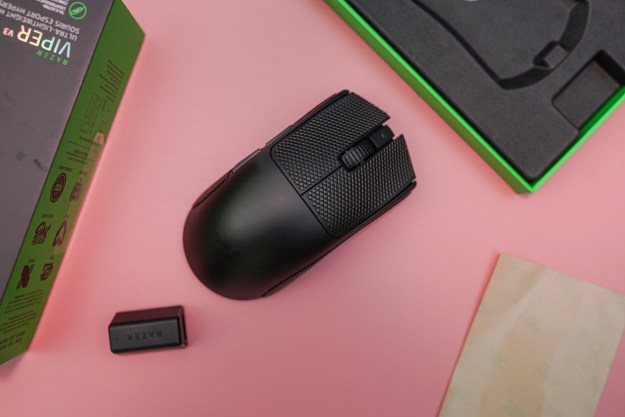
AT the beginning…

Intel has had a major role in PC motherboards for decades, but wasn’t there at the start. Apple lit up the personal computer market in the late 1970s, but IBM’s PC, XT, and AT designs won out because their only proprietary component was the BIOS software — which other companies promptly reverse-engineered. PC clones were born, and almost everyone copied IBM’s AT motherboards because some parts could be upgraded without buying a whole new computer.
Then came Intel. By the mid-1990s Intel was a major computer maker, building PC clones for dozens of companies. AT-based boards were a de facto standard, but Intel pushed things forward with a new “ATX” design, featuring standard mounting points, connectors, dimensions, and port panels. Intel developed the ATX design for its own benefit, but its importance outlasted Intel’s PC business.
“ATX’s impact was tremendous,” wrote a former Intel engineer now working in the non-profit sector. “ATX was cheaper and removed most of AT’s pain points, but also let anyone upgrade or build computers themselves from stock parts.”
The rockers and the mods

Within a few years, the ATX board (and its descendants like Micro ATX, Mini ATX, and even Extended ATX) brought DIY PCs to the mainstream. For almost 20 years, savvy users have been able to find a motherboard with the features (and BIOS) they want, pop a compatible CPU in a socket, buy a cool case, put in a power supply, then add precisely the drives, graphics, expansion cards, and memory they like. It’s geeky, but requires nothing more than a screwdriver and it’s usually cheaper than a stock PC.
But the desktop computing world has been changing. The first pressures came from notebooks, and now it’s smartphones and tablets. IDC found traditional PC shipments down 6.4 percent worldwide in 2012. In ditching desktop motherboards, Intel doesn’t see desktop computers going away — but it does see them getting smaller.
“[Intel’s] internal talent and experience of twenty years in the boards business … is being redistributed to address emerging new form factors — desktop and mobile,” wrote Intel spokesperson Daniel Snyder in a statement to partners.
So far, the only example is the awkwardly-named Next Unit of Computing (NUC) design. NUCs measure just four inches square yet feature modern processors, HD graphics, and even mini expansion slots. NUCs can do HD video, but there’s no way to install better graphics or upgrade the CPU.
You can’t have it your way

New desktop form factors follow a market that values small, cheap, and quiet over large and customizable — and it’s bad news for DIY PCs. Expansion slots and drive bays were the first to go: heck, they can make computers so big they barely fit under desks. Computer makers then shrank things further by putting features like graphics, networking, USB, and audio directly onto motherboards.
Smaller PCs are physically harder to access: getting inside a small form factor PC can require the dexterity (and even the tools) of a jeweler. More importantly, there’s little users can change about PCs built on tiny, feature-packed motherboards. Most components are soldered in so they can’t be swapped or upgraded. And without expansion slots, there’s no way to (say) install graphics that can handle high frame-rate PC games or add USB 3.0 connectivity for speedy backups.
The result? Mainstream desktops are going the way of notebooks, tablets, and smartphones with nothing that can be accessed, customized, or upgraded. In fact, Apple is already there: RAM in the current 21-inch iMac is soldered onto the motherboard, and even the hard drive can’t be replaced. Where Apple goes other PC makers seem to follow.
Gamers gonna game

What about the high end? Despite some laudable efforts, Intel has never been a big player in the gamer and boutique PC market, and high-end PC makers don’t seem concerned about Intel leaving the motherboard business.
“Asus and Gigabyte make up the majority of high-end motherboard sales,” noted OriginPC marketing specialist Eddy Piedra via email. “We don’t feel that Intel’s departure will really impact the market that much.”
“Intel’s announcement to exit the motherboard market has little to no impact on our business,” noted Harjit Chana, Chief Operations & Marketing Officer at high-end PC maker Digital Storm. “We feel third-party brands offer competitive solutions with features that specifically address the needs of gaming and enthusiast customers.”
Intel will still offer Form Factor Reference Designs as working blueprints for desktop motherboards, but the storied ATX-based motherboards risk becoming an afterthought once Intel stops selling boards of its own.
“Without feedback coming in from their own product and from companies like ours who use their products, the innovations side may slow down,” noted OriginPC’s Piedra. “It’s one thing to give a motherboard manufacturer some feedback, and another to give the chip designer the feedback. But we are confident the other board partners will continue to make quality products as they always have.”
Bottom line
Gamers and pros who spend big bucks on their rigs should be able to mix-and-match gear for the foreseeable future, but things aren’t so clear for everyday users.
Today, knowledgable folks can build inexpensive systems using ATX-derived motherboards and off-the-shelf parts. Those motherboards — and the parts they require — will become increasingly specialized, unusual products as mainstream computing shifts further towards compact desktops and mobile devices. That will mean fewer motherboard makers, higher prices…and the days of the cheap, DIY PC slowly coming to an end.


